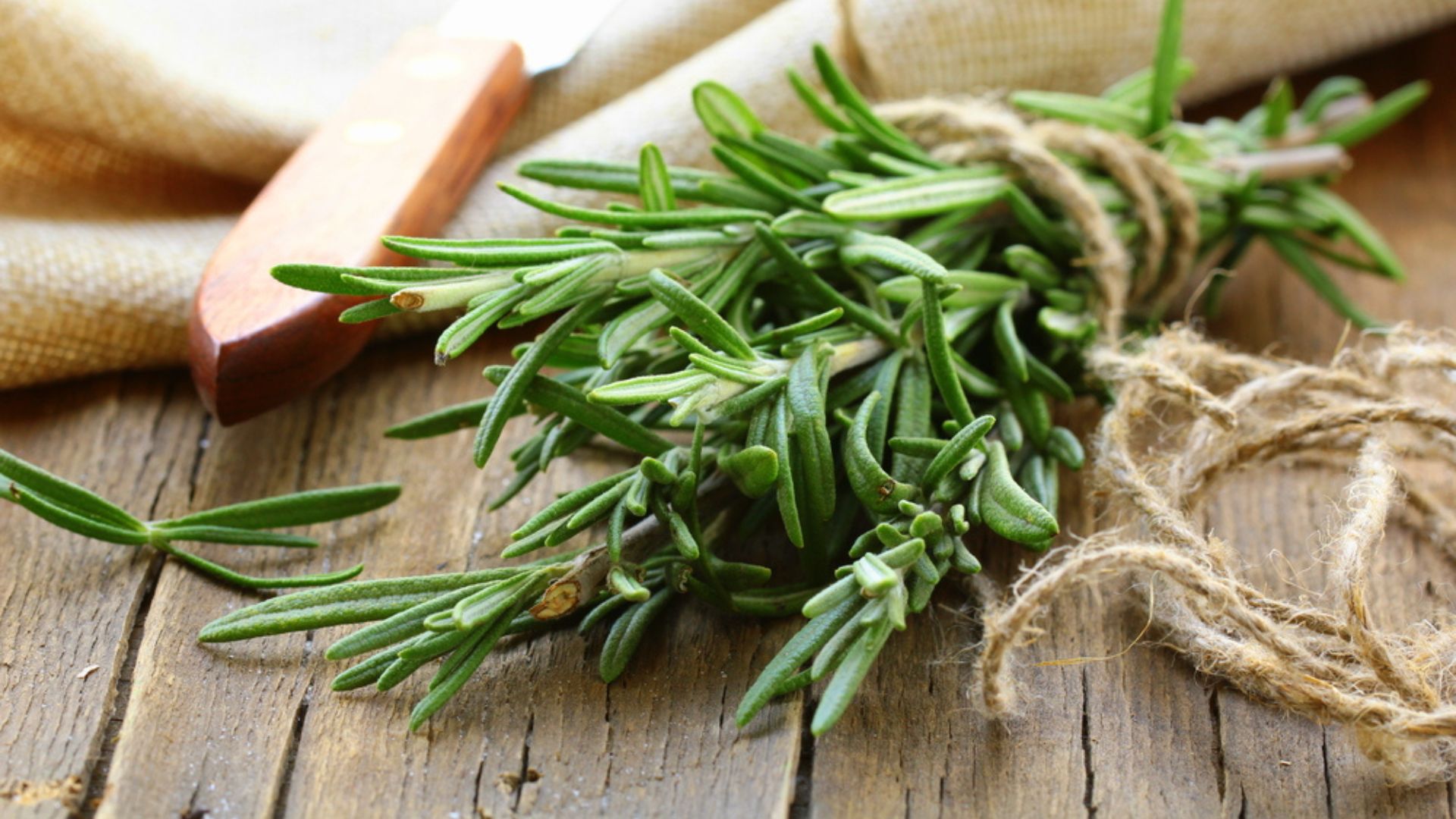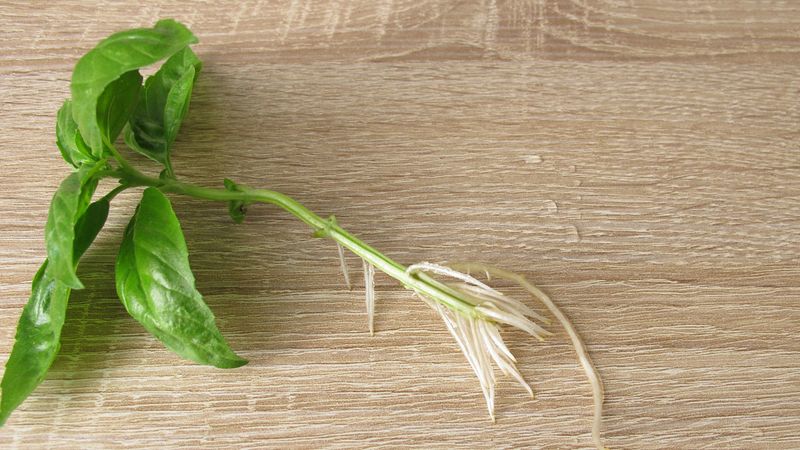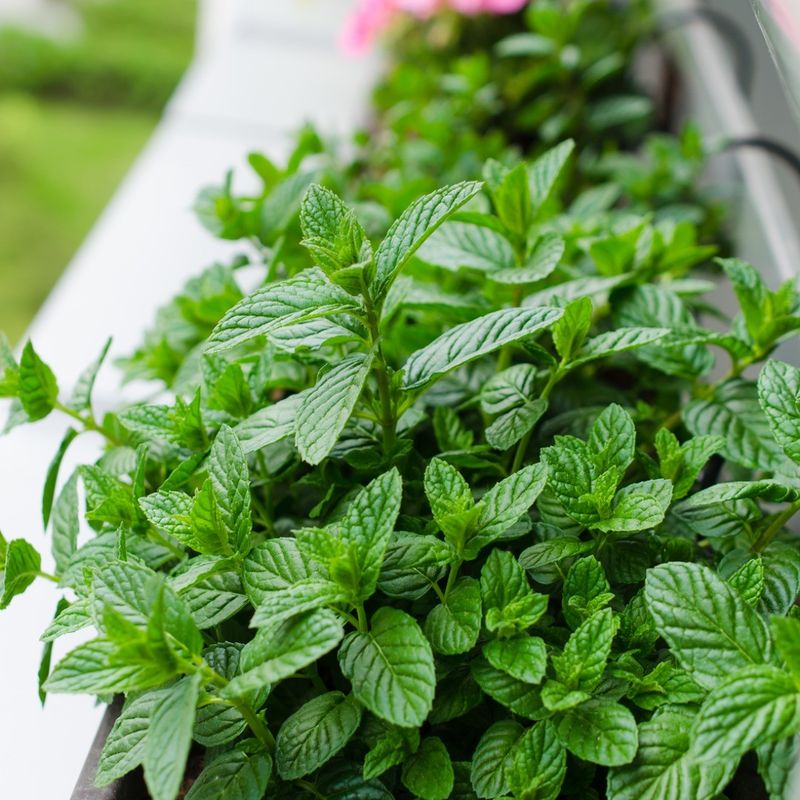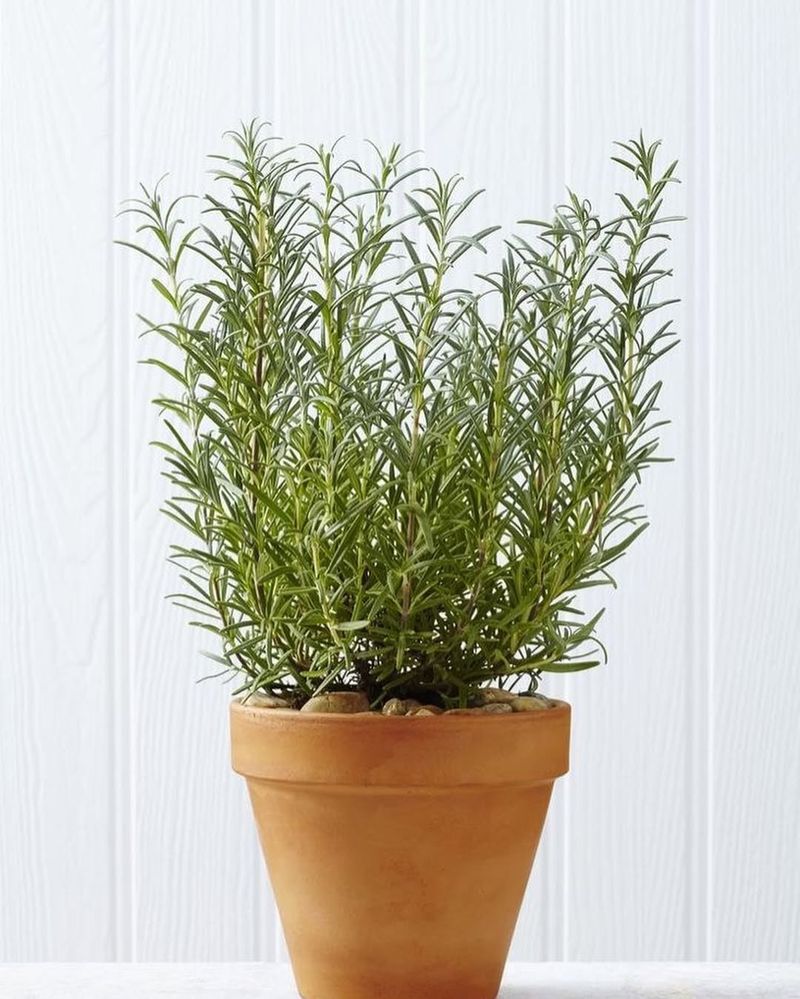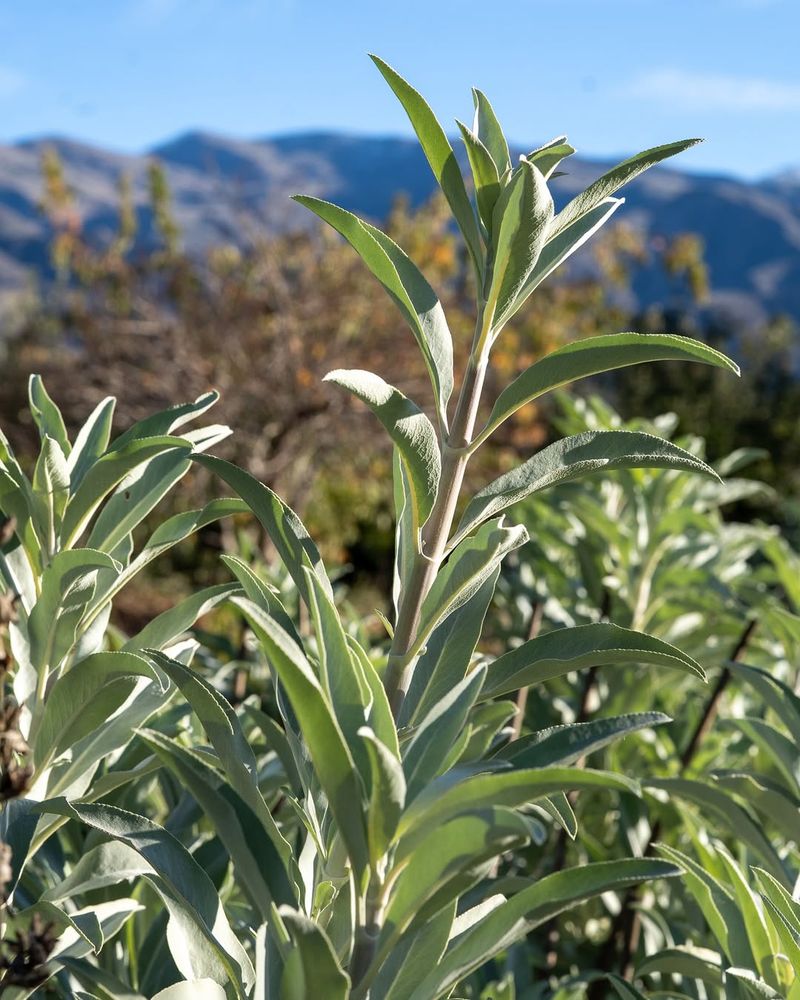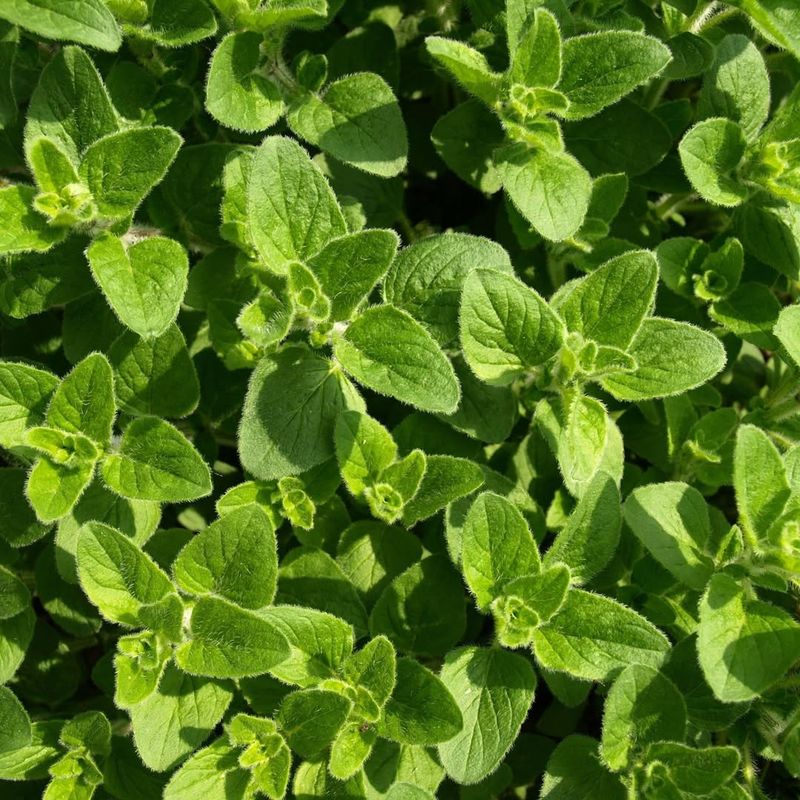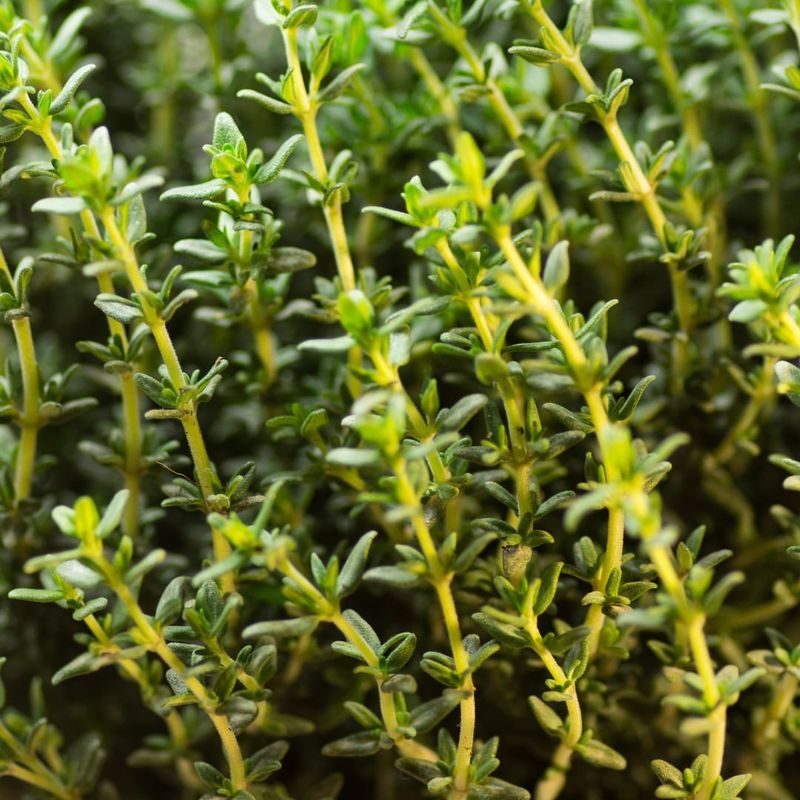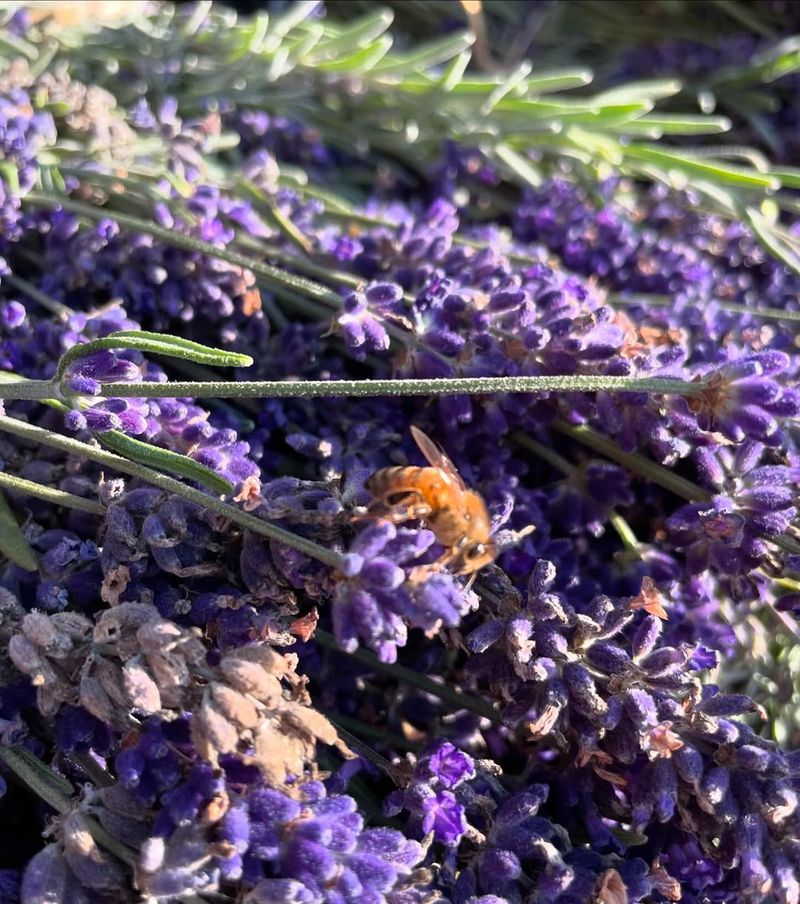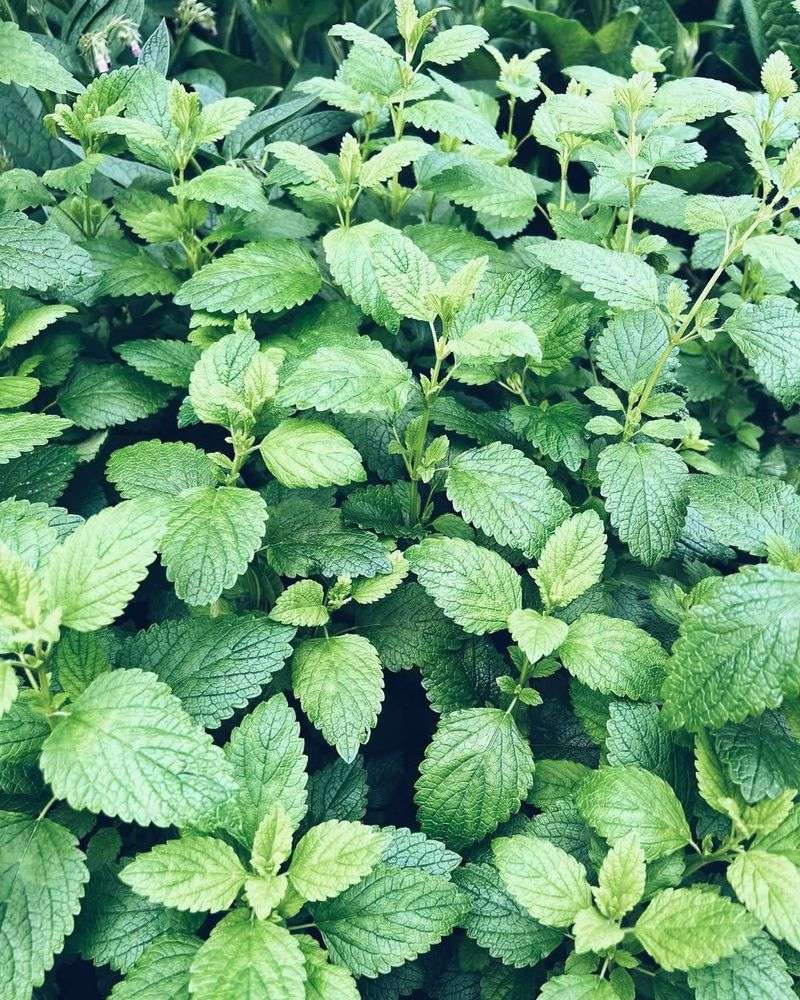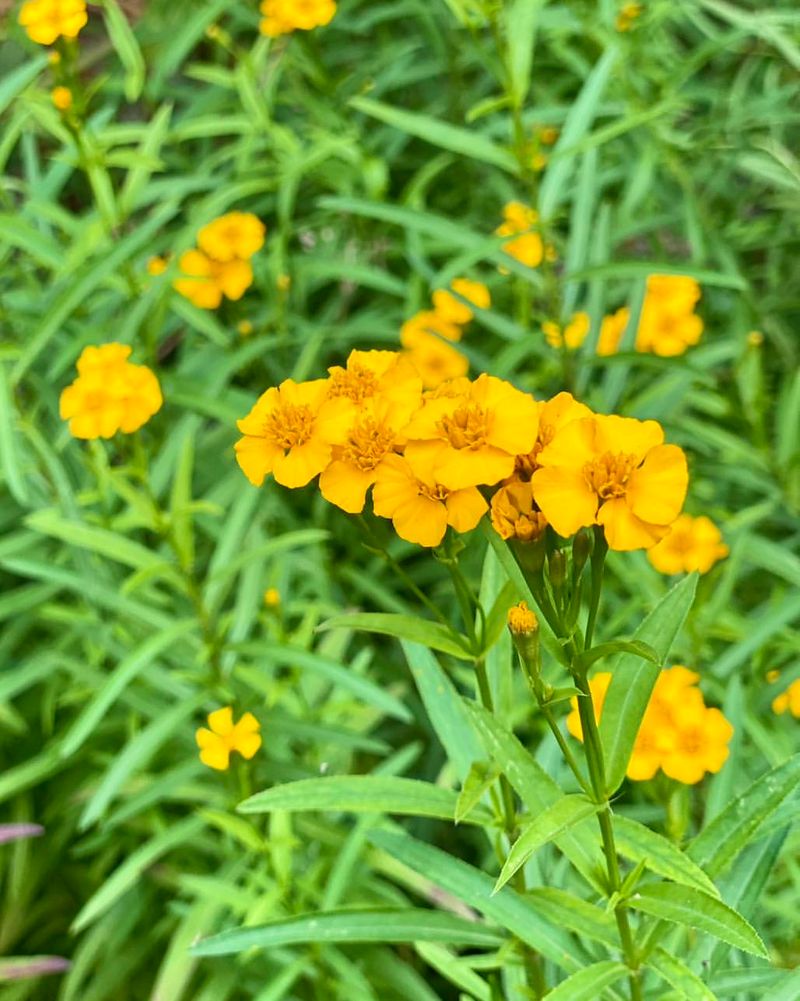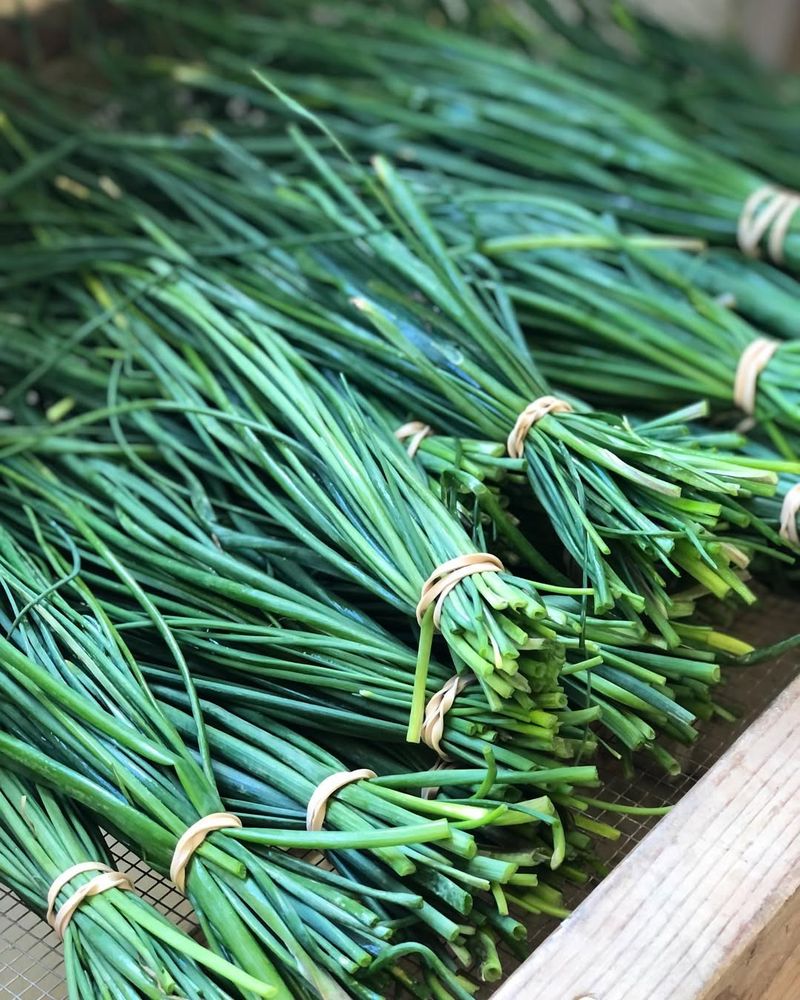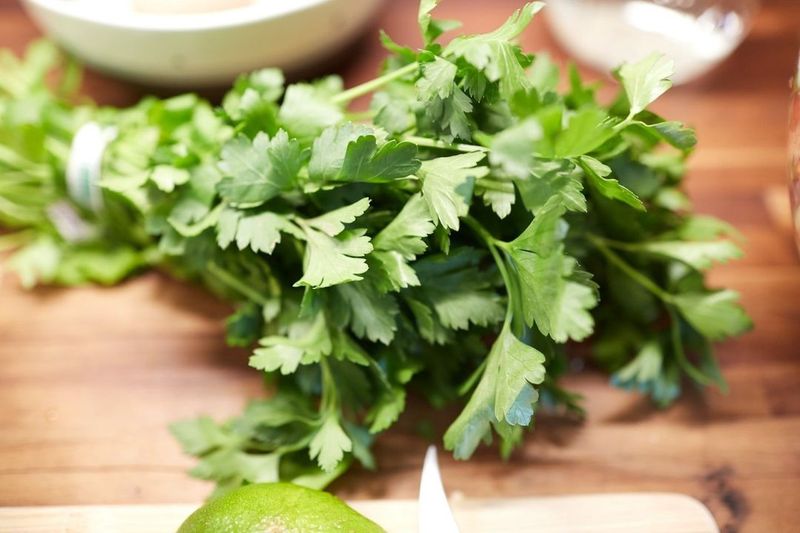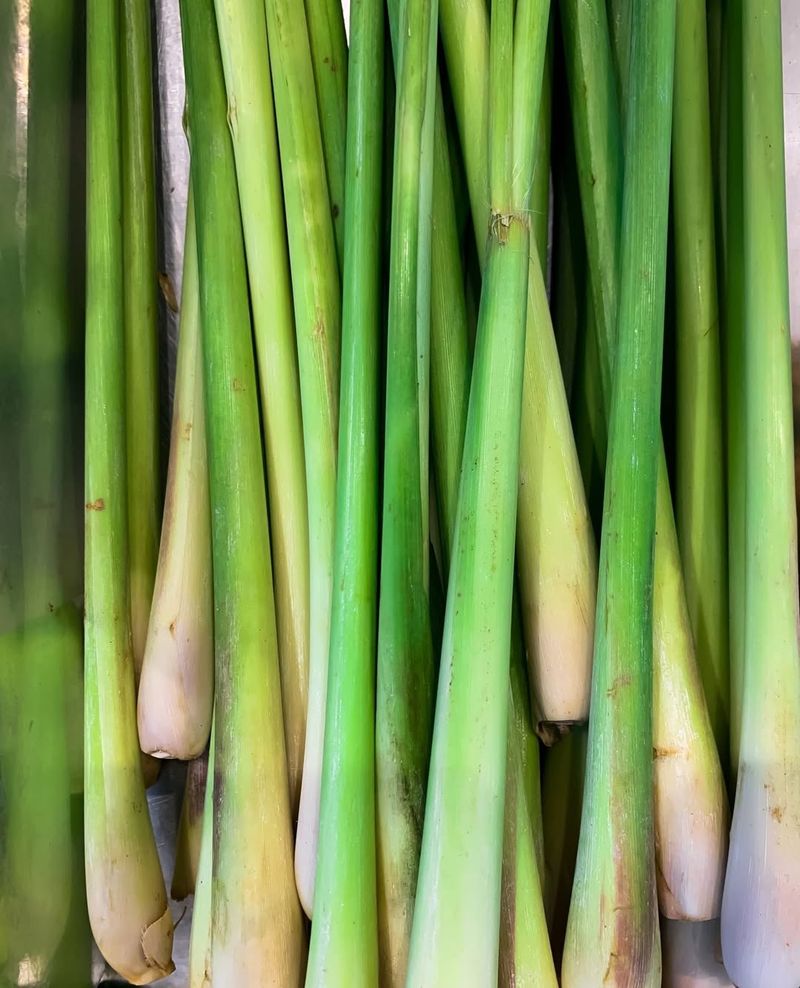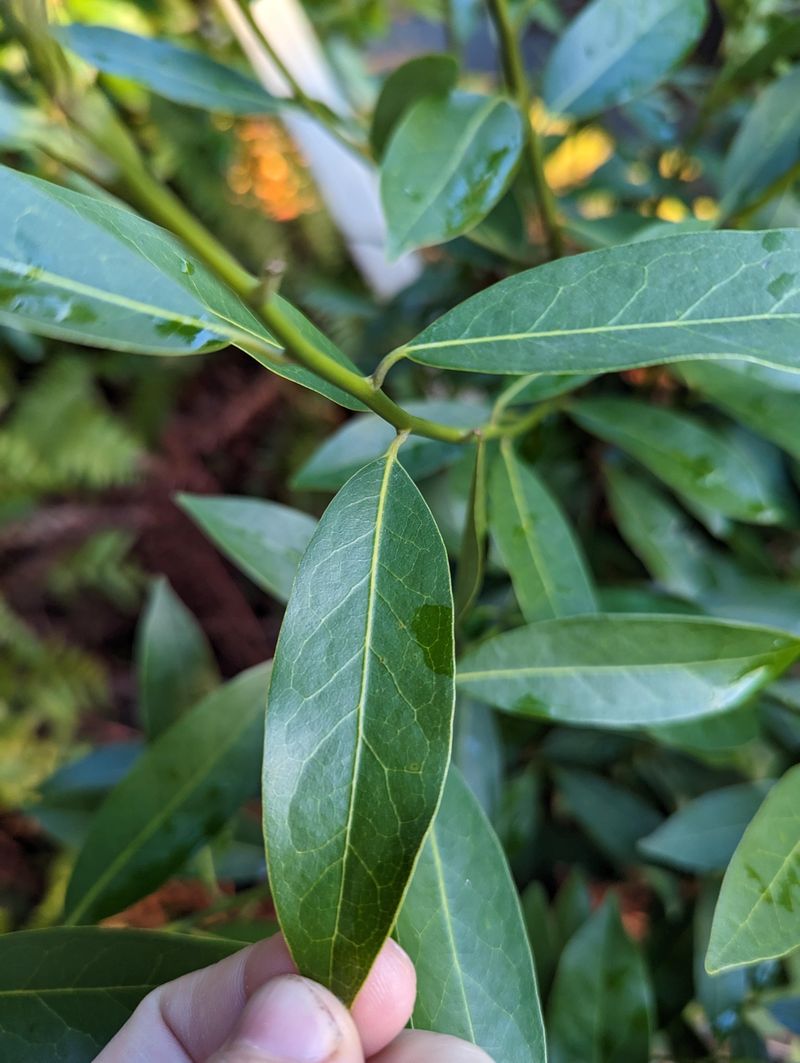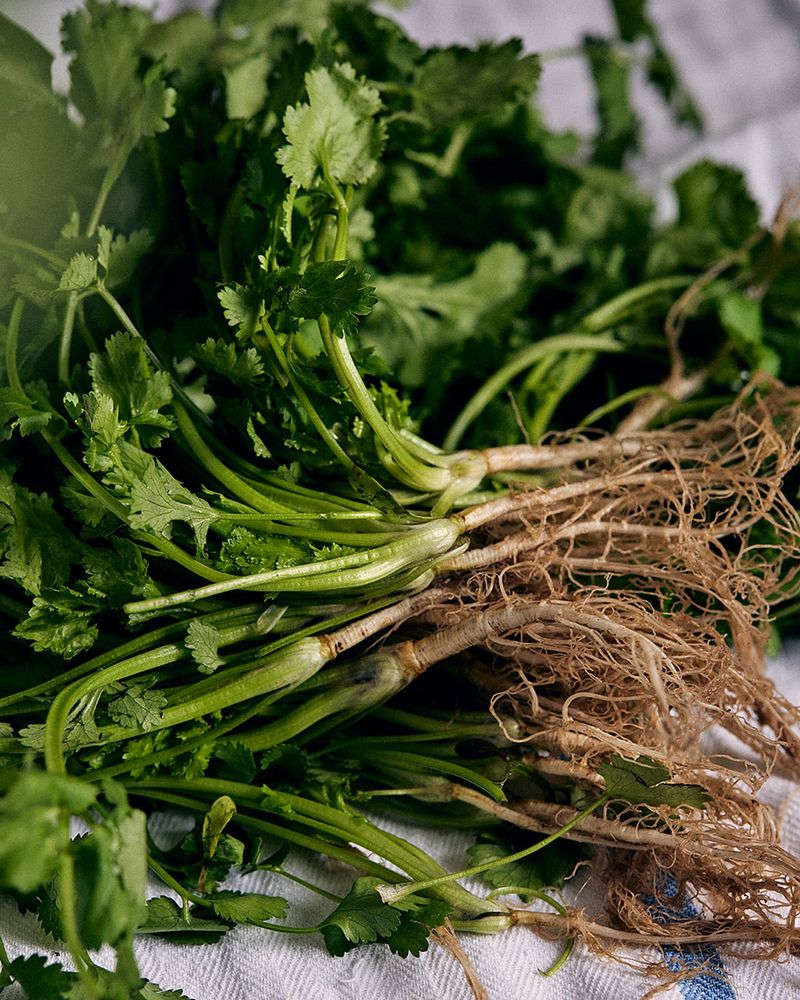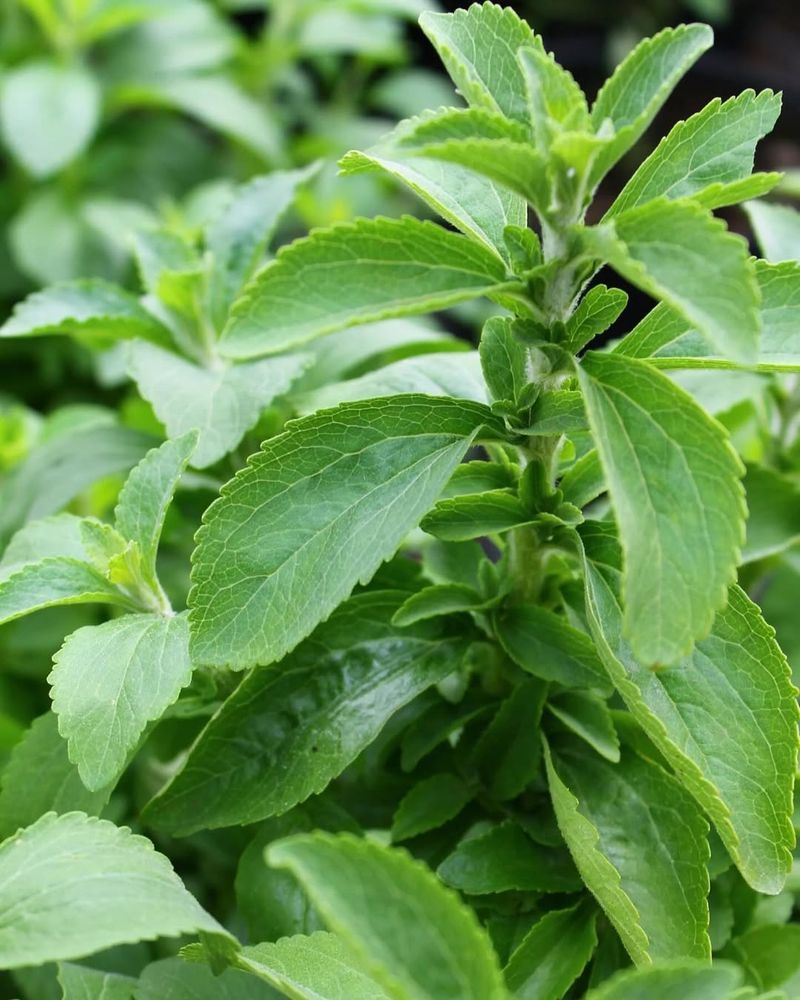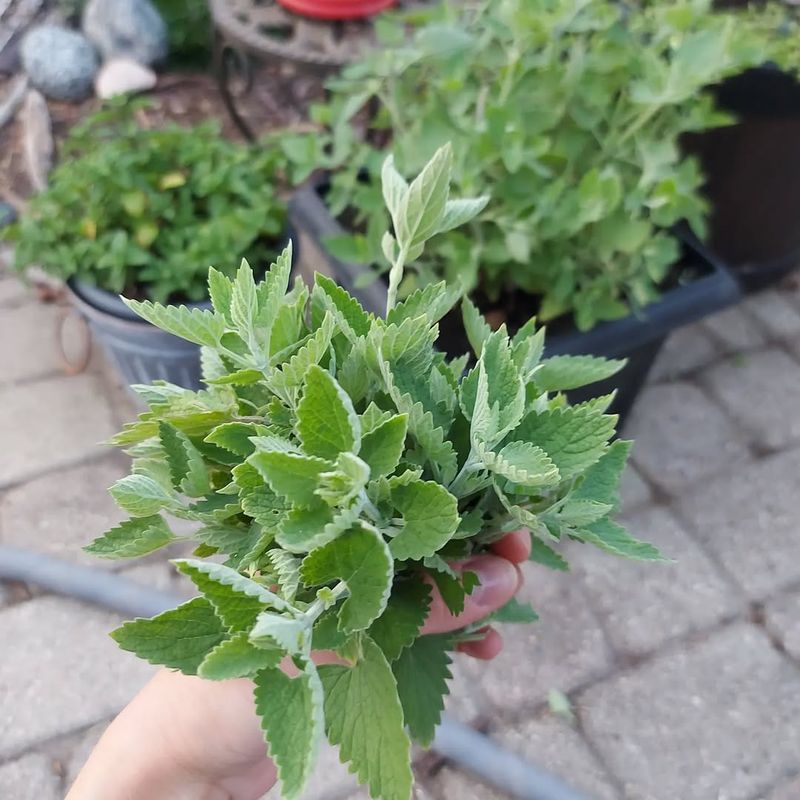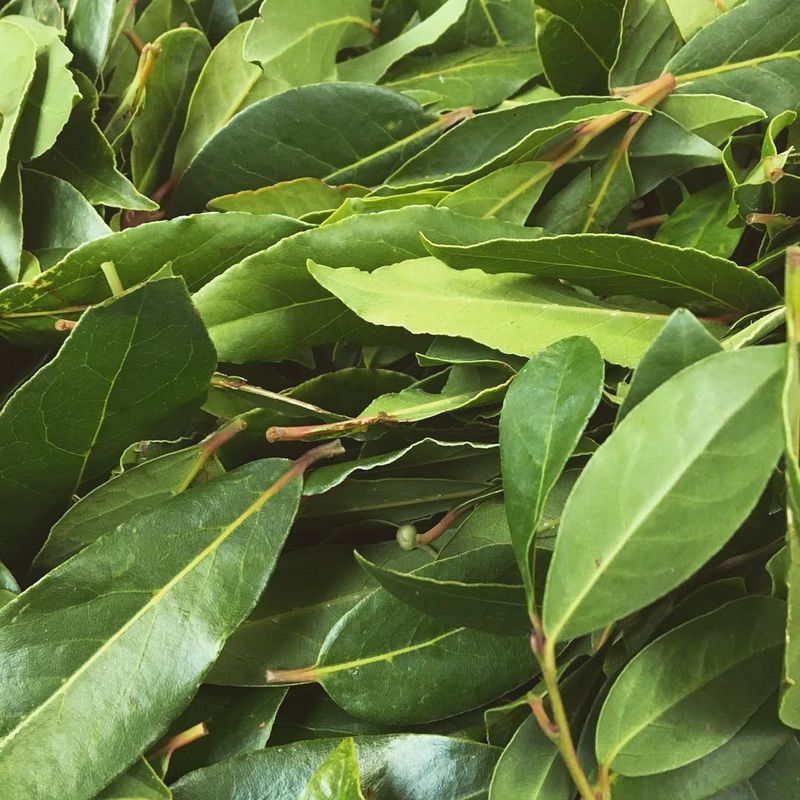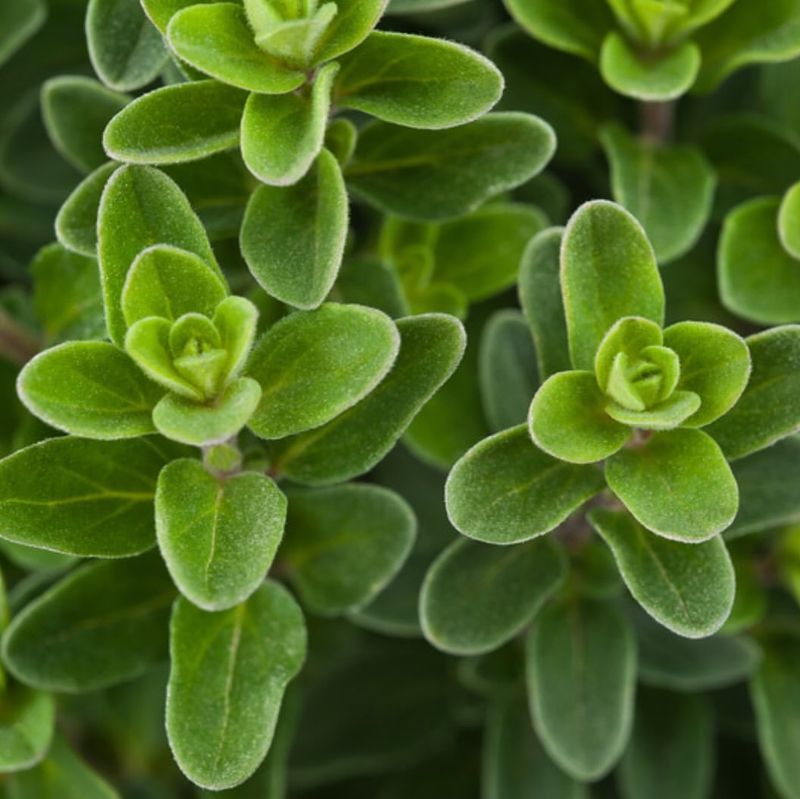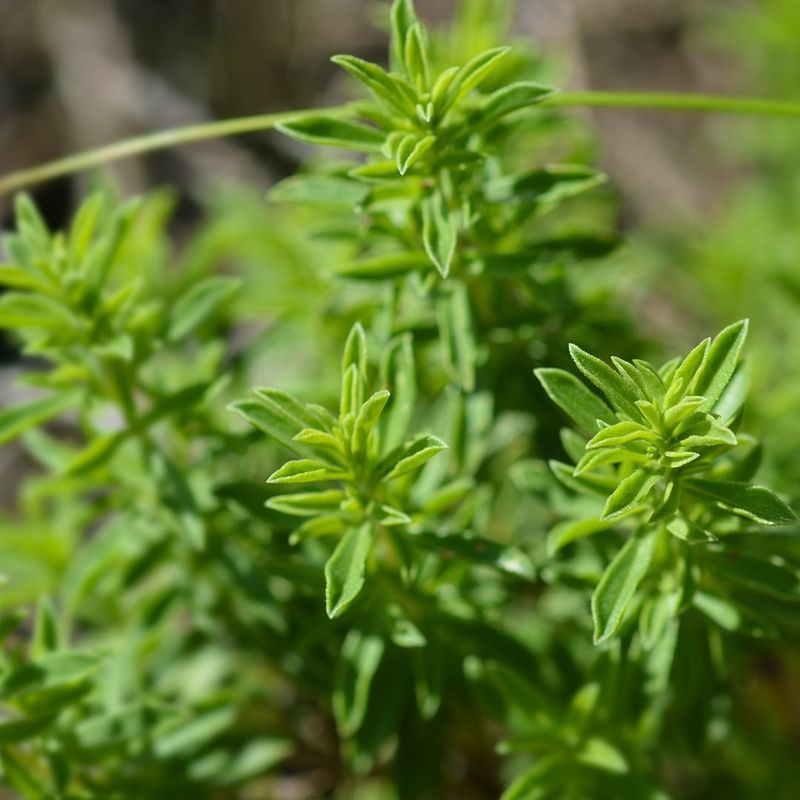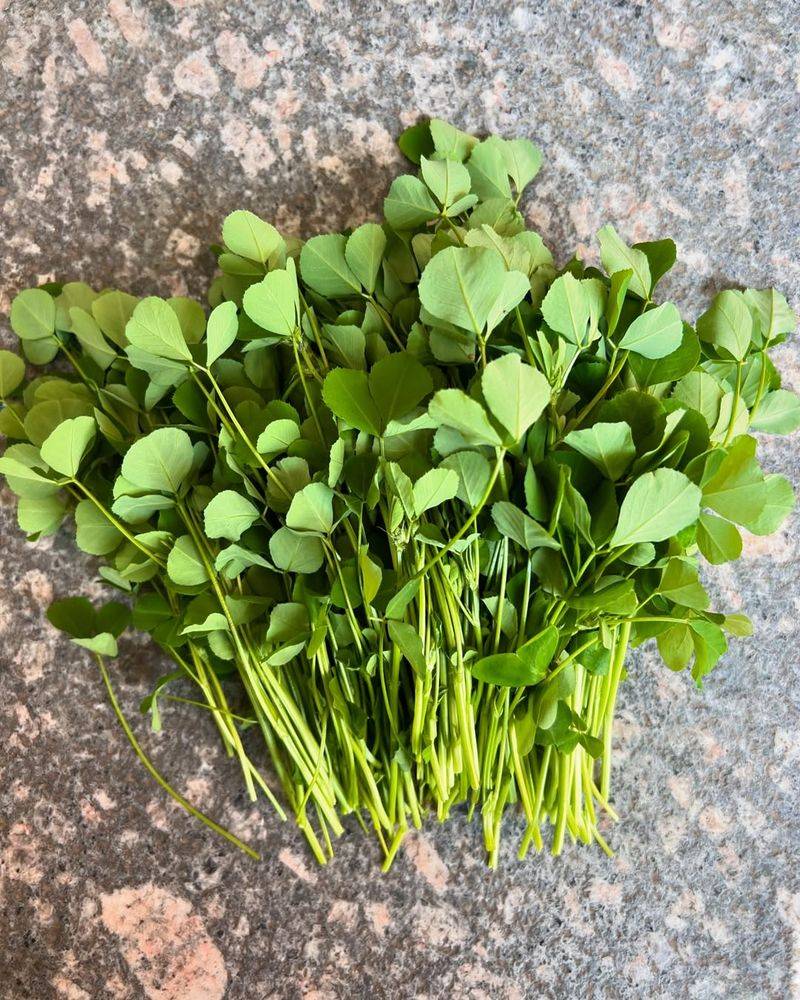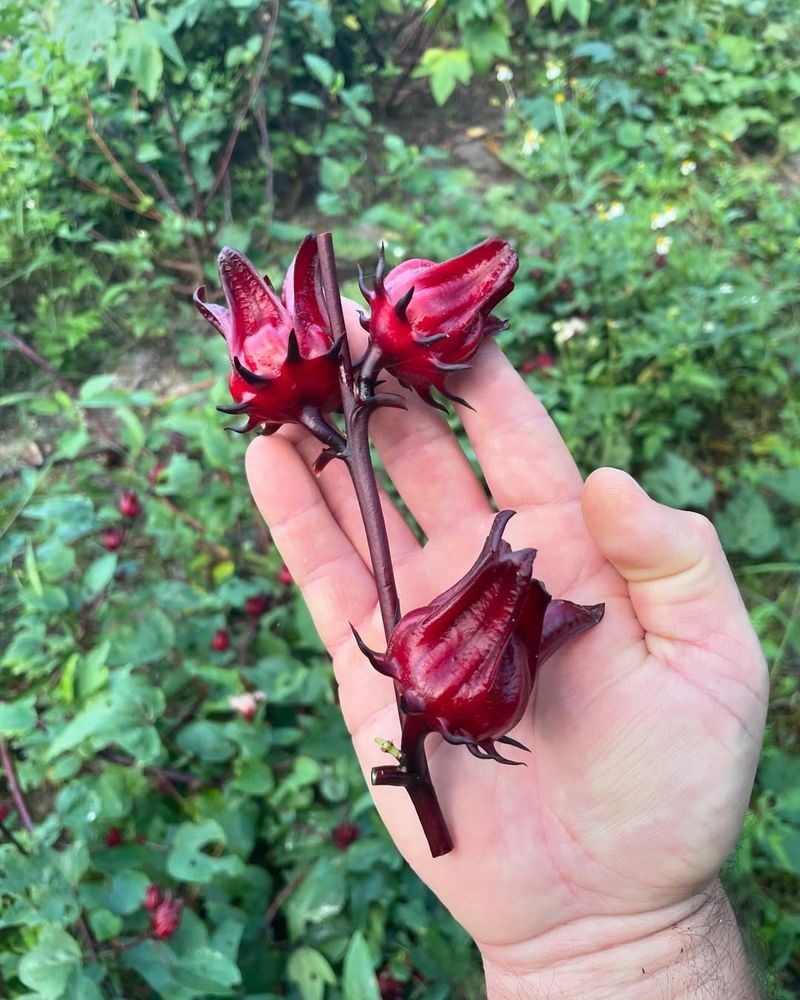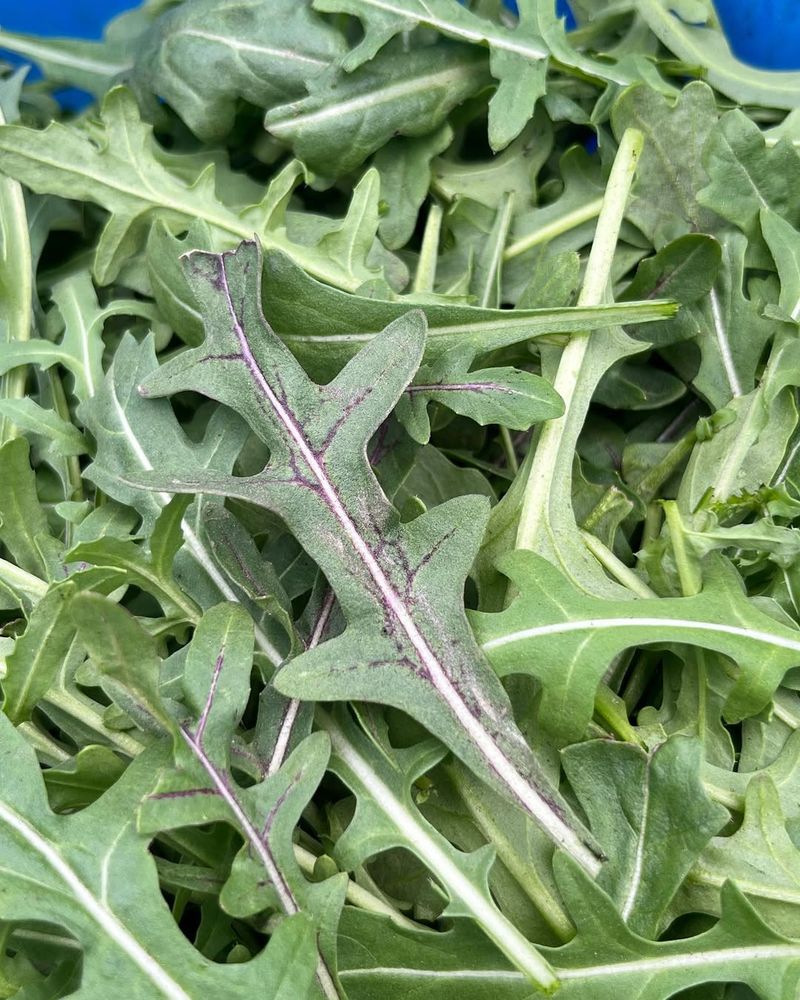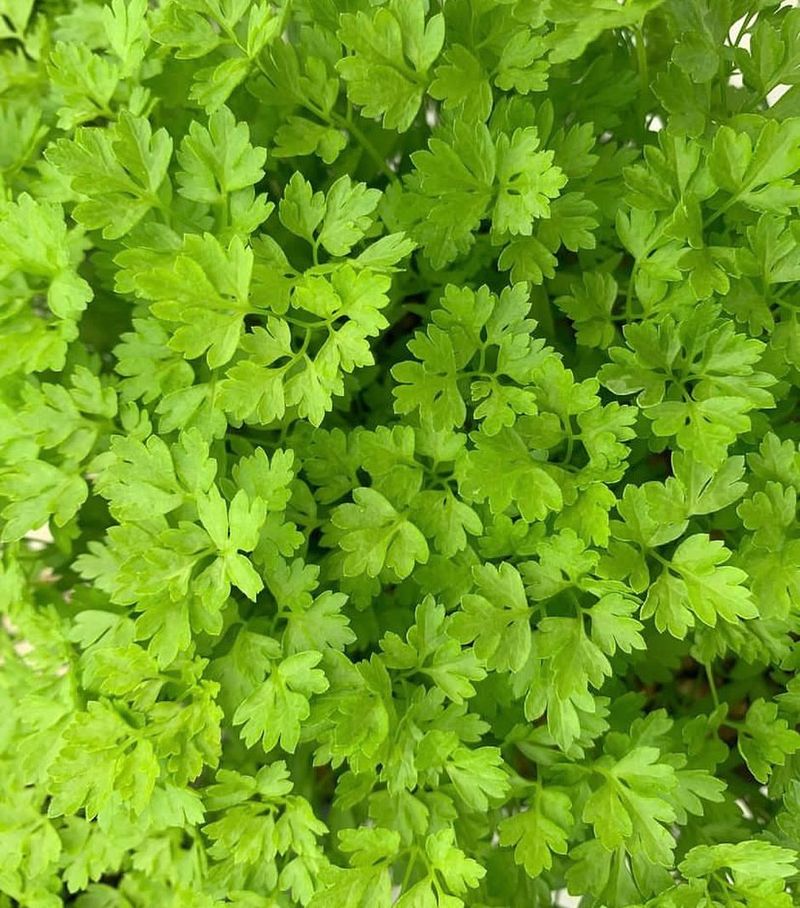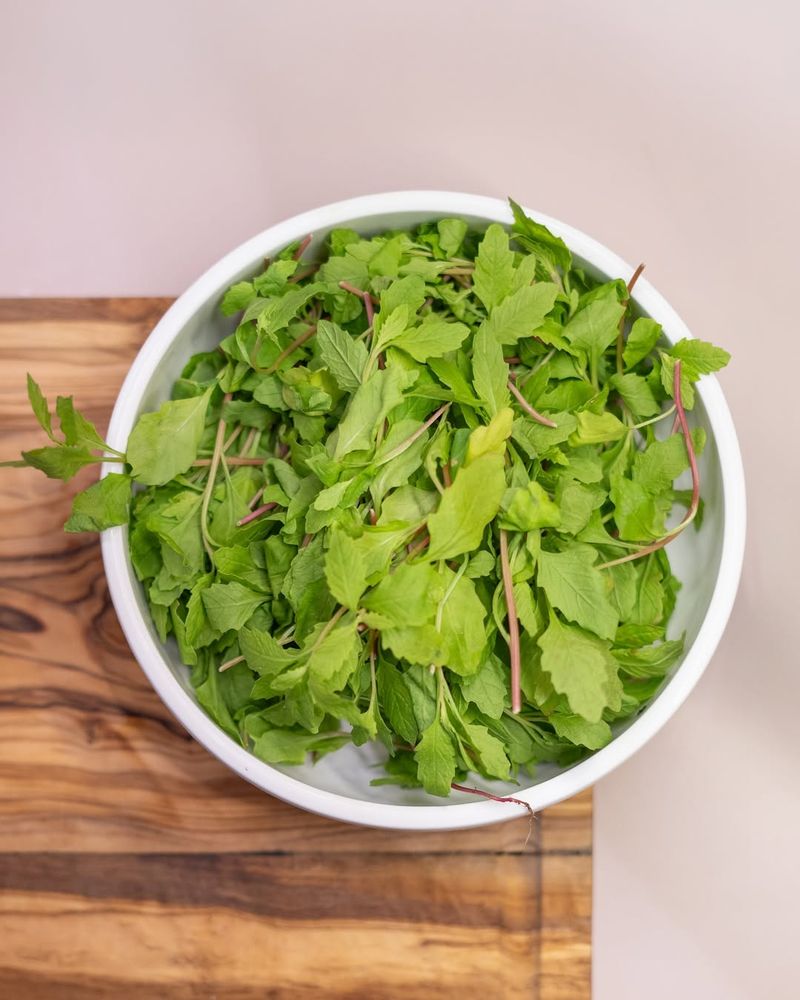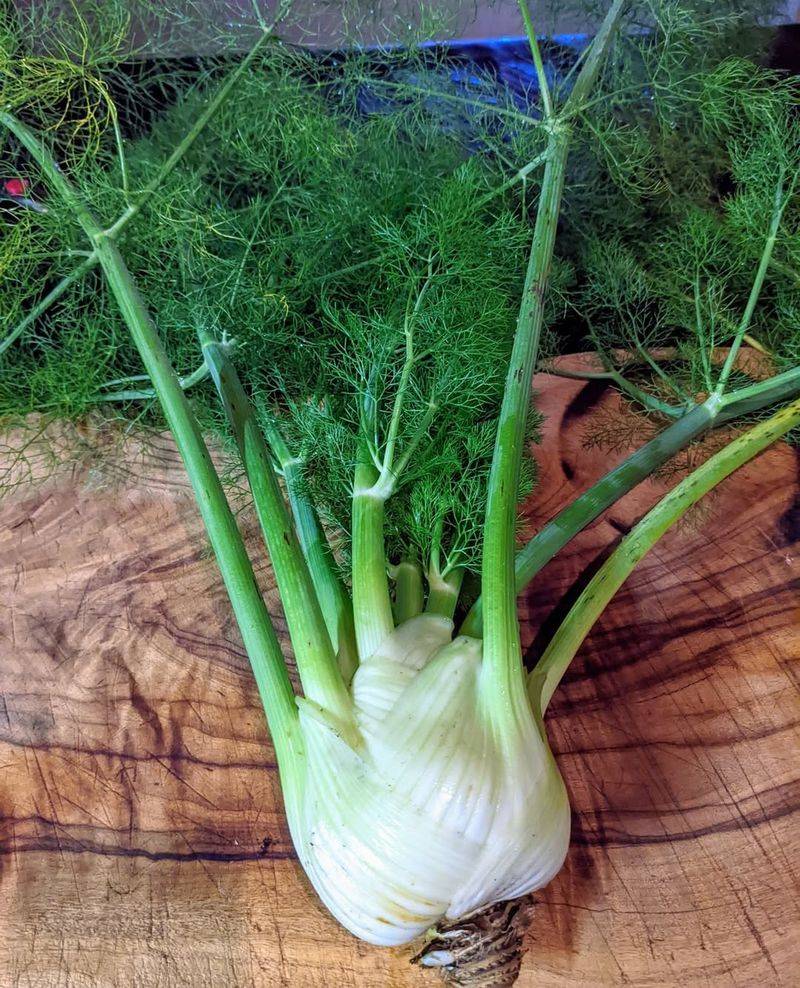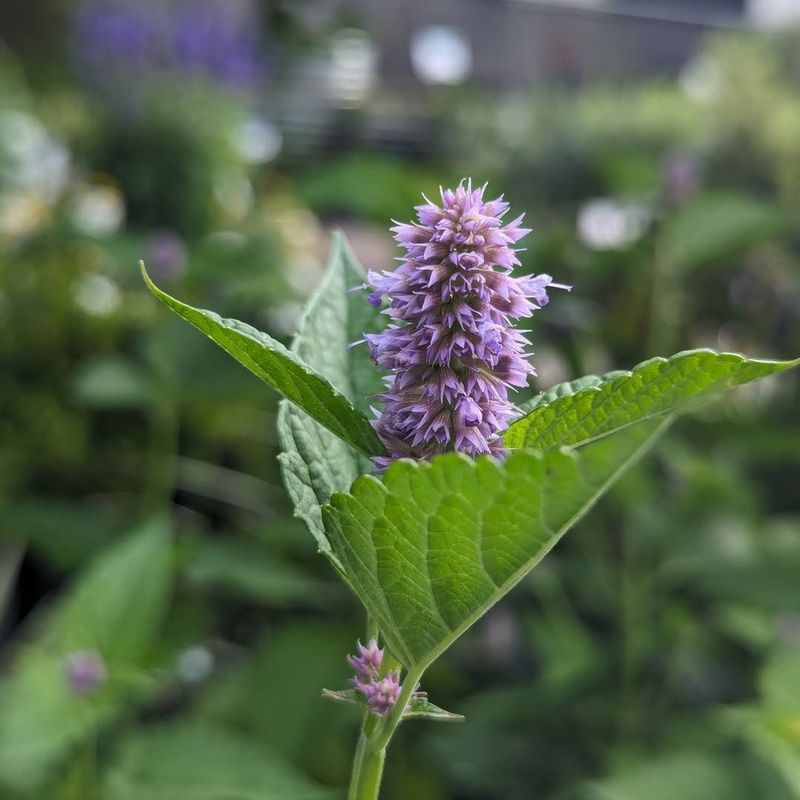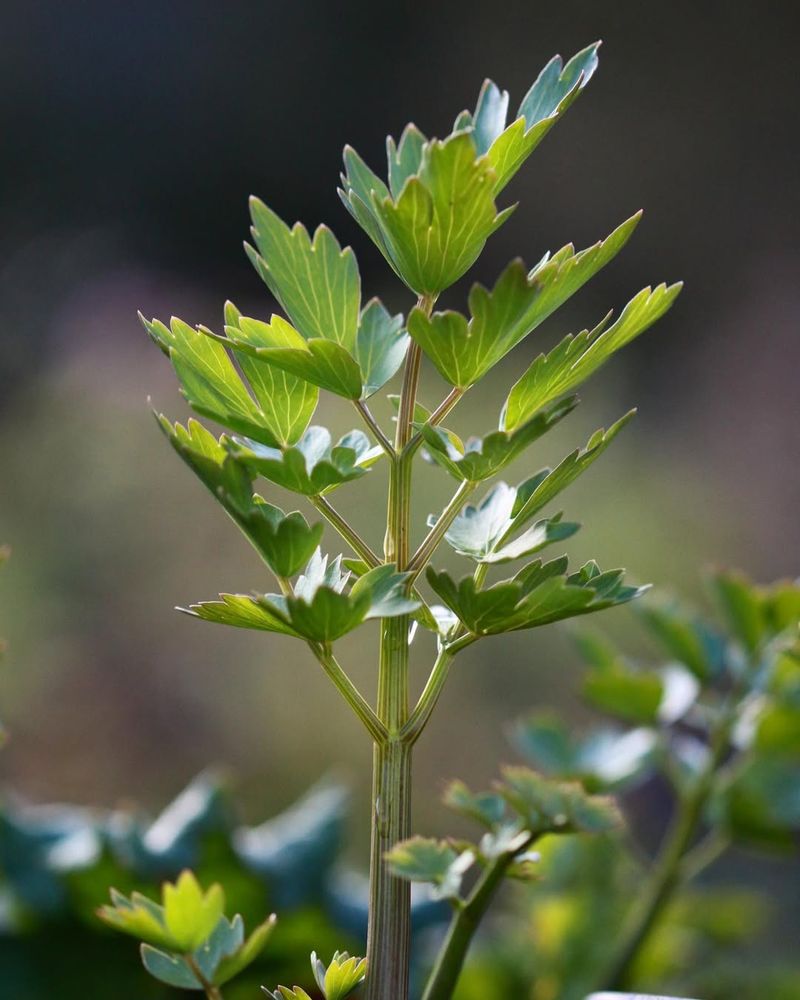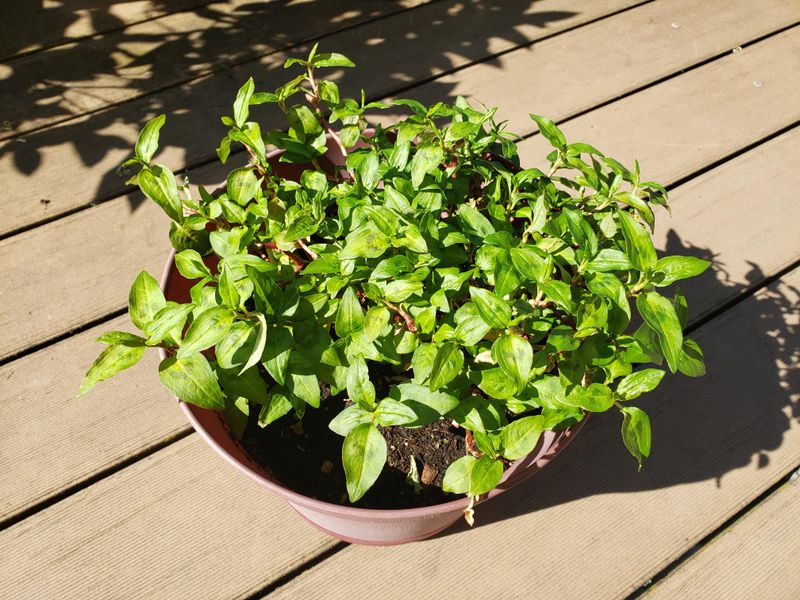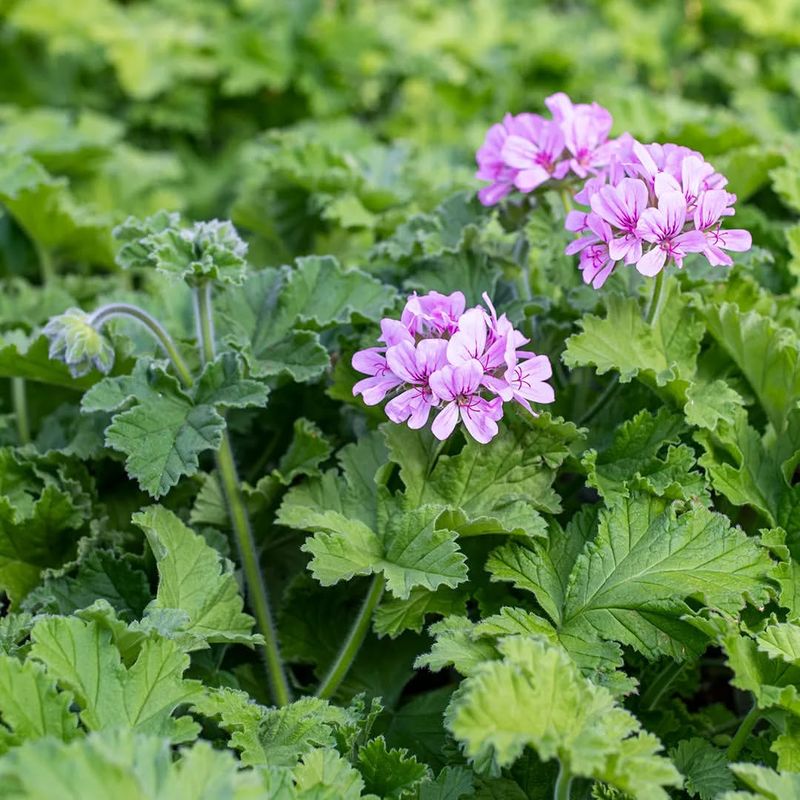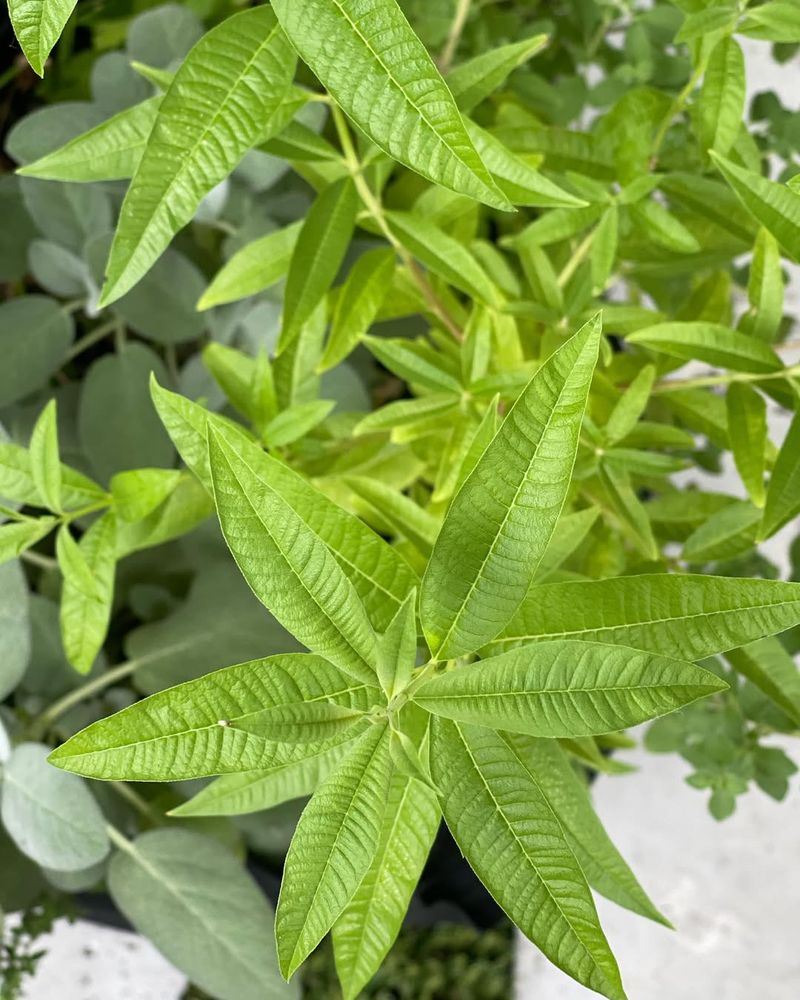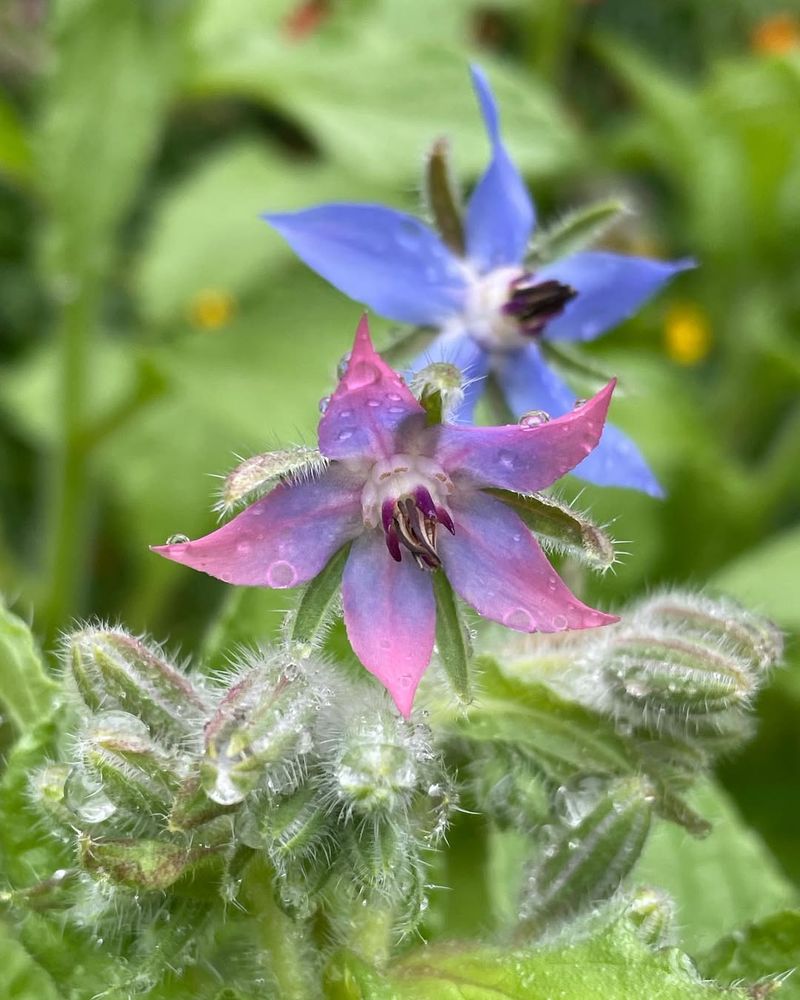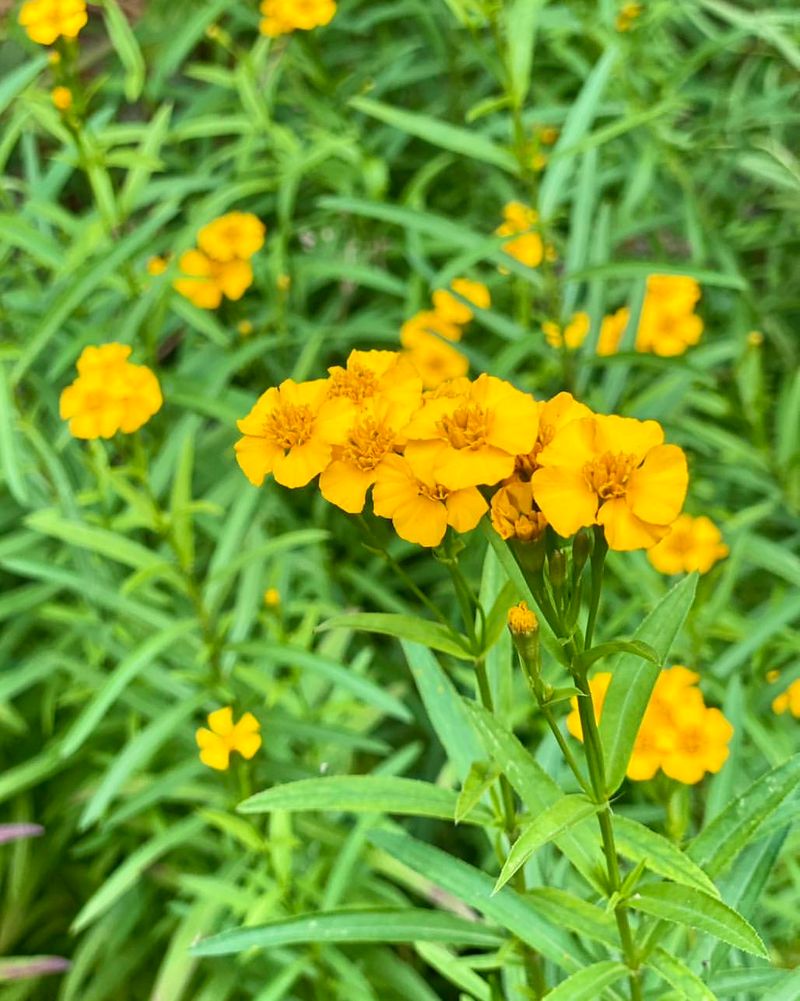Gardening enthusiasts often seek methods to expand their herb gardens with minimal effort. A surprisingly simple method is propagating these plants from cuttings.
This approach not only saves time but also preserves the genetic makeup of preferred species, ensuring consistent flavors and benefits. Below, discover how 32 different herbs can be grown from cuttings, transforming your gardening experience.
1. Basil
Known for its aromatic leaves, basil thrives from cuttings. This herb, a staple in many kitchens, requires minimal effort to propagate. By cutting a four-inch piece and placing it in water, new roots begin to form. After two weeks, transplant into soil for a steady growth. Regular watering and sunlight ensure its robust development.
Basil’s versatility in culinary dishes makes it a must-have in home gardens. Its fragrant leaves add flavor to dishes, offering both aesthetic and practical benefits. Alongside tomatoes, it enhances garden aesthetics and culinary flavors alike.
2. Mint
Prized for its refreshing aroma, mint grows easily from cuttings. A simple snip of a stem, followed by placing it in water, initiates root development. Within days, roots emerge, ready for soil transplantation. This hardy herb adapts well to various conditions, making it a gardening favorite. Its vigorous growth provides ample leaves for teas and garnishes.
Mint’s strong scent repels pests, offering natural protection to gardens. Enjoy fresh mint leaves in beverages, ensuring a continuous supply by regular pruning. Its versatility and resilience are unmatched in herb gardens.
3. Rosemary
Rosemary, with its distinctive fragrance, is perfect for propagation through cuttings. Begin by cutting a six-inch stem, removing leaves from the lower half. Place the cutting in a jar of water until roots appear. Transplant into potting mix, ensuring a sunny spot for best growth.
Rosemary’s robust nature makes it ideal for both indoor and outdoor settings. Its aromatic leaves enhance a variety of dishes, from meats to bread. Regular trimming promotes bushier growth, providing a constant supply of this flavorful herb. Suitable for novice and experienced gardeners alike.
4. Sage
Esteemed for its earthy aroma, sage is easily propagated from cuttings. A four-inch cutting, stripped of lower leaves, can be rooted in water. Once roots develop, transfer to soil, ensuring ample sunlight. Sage’s resilience makes it adaptable to various climates, thriving with minimal care. Its leaves offer a peppery flavor, enhancing meats and sauces.
This herb’s presence in gardens also deters pests, promoting healthier plants. Incorporate sage in gardens for its culinary and ornamental value. Regular harvesting encourages new growth, ensuring a continuous supply.
5. Oregano
Famous for its strong flavor, oregano is a popular choice for propagation. Cut a healthy stem, removing leaves from the lower section. Place it in water for root development. Once established, transfer to soil, ensuring it receives ample sunlight. Oregano thrives in well-drained conditions, requiring minimal maintenance.
Its leaves add zest to Italian dishes, making it indispensable in kitchens. Gardeners appreciate its hardy nature, as it withstands varying climates. Regular pruning encourages bushy growth, providing a steady supply. Ideal for both novice and seasoned gardeners.
6. Thyme
Known for its culinary uses, thyme is easily grown from cuttings. Begin with a four-inch cutting, removing leaves from the bottom. Place in water until roots form, then transplant to soil. This herb prefers well-drained soil and sunlight, thriving with minimal care. Thyme’s small leaves pack a punch, adding flavor to meats and vegetables.
Its resilience makes it suitable for gardens and containers alike. Regular harvesting promotes new growth, ensuring a fresh supply for culinary needs. Ideal for those seeking a low-maintenance, flavorful herb.
7. Lavender
Renowned for its soothing scent, lavender grows effortlessly from cuttings. Snip a six-inch stem, strip lower leaves, and place in water. Once roots appear, transfer to soil in a sunny location. Lavender’s hardy nature makes it adaptable to various climates, requiring minimal watering. Its fragrant blooms attract pollinators, enhancing garden biodiversity.
Beyond gardens, lavender’s aroma is used in sachets and oils, providing calming effects. Regular pruning encourages bushier growth, ensuring vibrant blooms. Perfect for those seeking fragrance and aesthetic appeal in their gardens.
8. Lemon Balm
Treasured for its citrusy aroma, lemon balm grows well from cuttings. A four-inch stem, once stripped of lower leaves, starts rooting in water. Transfer to soil after roots form, opting for a sunny spot. This resilient herb thrives with minimal care, offering a fresh scent to gardens.
Lemon balm’s leaves are perfect for teas, providing a calming effect. Its presence in gardens can repel insects, naturally protecting other plants. Regular harvesting ensures a steady supply of leaves, enhancing both culinary and garden experiences. Suitable for novice and experienced gardeners alike.
9. Tarragon
Valued for its distinctive anise flavor, tarragon is easy to propagate. Begin with a four-inch cutting, ensuring a few leaves remain. Place in water until roots develop, then transfer to well-drained soil. This herb flourishes in sunny spots, requiring minimal care.
Tarragon’s unique taste enhances sauces and poultry dishes, making it a culinary favorite. Its robust nature allows it to thrive in various climates, ideal for diverse gardens. Regular trimming promotes bushier growth, ensuring a fresh supply. A great choice for both home cooks and gardeners.
10. Chives
Known for their mild onion flavor, chives are easy to grow from cuttings. A simple snip of a stalk, placed in water, initiates root growth. Within days, roots emerge, ready for soil transplantation. This herb thrives in well-drained soil and full sun, providing ample harvests.
Chives’ delicate stalks add flavor to salads and garnishes, making them a kitchen staple. Their flowers attract pollinators, enhancing garden health. Regular harvesting encourages new growth, ensuring a continuous supply. Perfect for those seeking a flavorful, low-maintenance herb.
11. Parsley
Prized for its fresh taste, parsley grows easily from cuttings. A healthy stem, placed in water, starts root development. Once roots appear, transfer to soil in a sunny spot. Parsley’s bright leaves enhance dishes, from soups to sauces, offering both flavor and garnish. This herb thrives in various conditions, adapting well to gardens and containers.
Regular pruning promotes bushier growth, ensuring a fresh supply. Parsley’s versatility makes it a favorite among home cooks and gardeners alike. Its robust nature ensures it withstands different climates, providing year-round harvests.
12. Lemongrass
Known for its citrus scent, lemongrass is easily propagated from cuttings. A stalk, placed in water, quickly develops roots. Once roots form, transfer to soil in a sunny location. Lemongrass thrives in warm climates, requiring minimal watering. Its tall stalks add height to gardens, providing ornamental value.
The aromatic leaves are used in teas and culinary dishes, offering a refreshing flavor. Regular trimming encourages vigorous growth, ensuring a steady supply. Ideal for tropical gardens and container planting, lemongrass adds both beauty and flavor.
13. Bay Laurel
Valued for its aromatic leaves, bay laurel grows well from cuttings. A six-inch stem, stripped of lower leaves, roots easily in water. Once roots develop, transfer to soil, preferring a sunny spot. This evergreen shrub thrives in Mediterranean climates, requiring minimal maintenance.
Bay leaves add depth to stews and soups, enhancing culinary experiences. Its glossy leaves provide year-round greenery, offering both aesthetic and practical benefits. Regular pruning maintains shape and encourages new growth. Ideal for those seeking a hardy, flavorful addition to their gardens.
14. Cilantro
Known for its fresh taste, cilantro thrives from cuttings. A four-inch stem, placed in water, starts root development. Once roots appear, transfer to soil, ensuring a sunny location. Cilantro’s leaves offer a burst of flavor to dishes, from salsas to curries. This herb’s fast growth ensures a continuous supply, ideal for regular harvesting.
Its presence in gardens attracts beneficial insects, promoting biodiversity. Cilantro’s adaptability makes it suitable for various climates, thriving with minimal care. An essential herb for cooks seeking fresh flavors and easy cultivation.
15. Stevia
Treasure for its sweet leaves, stevia is easy to grow from cuttings. A healthy stem, stripped of lower leaves, roots in water. Once roots form, transfer to soil in a sunny spot. This herb’s leaves provide a natural sweetener, ideal for teas and desserts. Stevia thrives in warm climates, requiring minimal watering.
Its fast growth ensures a steady supply of leaves, perfect for regular harvesting. Gardeners appreciate its low-maintenance nature and health benefits. Suitable for those seeking a sugar substitute, stevia adds both flavor and greenery to gardens.
16. Catnip
Cherished by feline friends, catnip is easily propagated from cuttings. Snip a stem, strip lower leaves, and place in water for rooting. Once roots appear, transfer to soil, ensuring sunlight. Catnip’s leaves provide entertainment for cats and can be used in teas for humans. Its presence in gardens deters pests, promoting healthier plants.
Regular pruning encourages bushier growth, ensuring a continuous supply. Catnip’s hardy nature makes it suitable for various climates, thriving with minimal care. Perfect for pet owners and gardeners alike, offering both amusement and utility.
17. Bay Leaves
Bay leaves, known for their fragrant aroma, grow well from cuttings. A six-inch stem, stripped of lower leaves, roots quickly in water. Once roots form, transfer to soil, preferring sunlight. This evergreen plant thrives in various climates, requiring minimal maintenance.
Bay leaves enhance soups and stews, providing depth to flavors. The glossy foliage offers year-round greenery, adding both aesthetic and culinary value. Regular pruning maintains shape and encourages new growth. Ideal for those seeking a hardy, flavorful addition to their gardens.
18. Sweet Marjoram
Sweet marjoram, with its delicate flavor, grows easily from cuttings. A healthy stem, placed in water, starts root development. Once roots appear, transfer to soil, ensuring a sunny spot. This herb’s leaves add a sweet, citrusy flavor to dishes, enhancing culinary creations. Its presence in gardens attracts pollinators, promoting biodiversity.
Sweet marjoram’s adaptability makes it suitable for various climates, thriving with minimal care. Regular harvesting encourages bushier growth, ensuring a fresh supply. An essential herb for cooks seeking unique flavors and easy cultivation.
19. Winter Savory
Winter savory, known for its peppery taste, thrives from cuttings. Snip a four-inch stem, place in water, and watch roots develop. Once established, transfer to well-drained soil in sunlight. Winter savory’s robust nature makes it ideal for rock gardens and containers.
Its leaves add a spicy kick to dishes, enhancing flavors. This herb’s presence in gardens deters pests, promoting healthier plants. Regular pruning encourages dense growth, ensuring a steady supply. Suitable for seasoned gardeners seeking both flavor and ornamental value.
20. Fenugreek
Valued for its medicinal properties, fenugreek grows from cuttings. A healthy stem, placed in water, quickly develops roots. Once roots form, transfer to soil, ensuring a sunny location. Fenugreek’s leaves are used in culinary dishes, offering a distinct flavor. Its seeds hold medicinal value, used in various remedies.
This herb’s adaptability makes it suitable for different climates, thriving with minimal care. Regular harvesting ensures a continuous supply, ideal for those seeking both culinary and health benefits. Fenugreek adds both flavor and utility to gardens.
21. Sorrel
Prized for its tangy taste, sorrel grows easily from cuttings. A four-inch stem, stripped of lower leaves, roots in water. Once established, transfer to soil, ensuring ample sunlight. Sorrel’s leaves add a lemony flavor to salads and soups, enhancing dishes.
This herb’s fast growth ensures a steady supply, perfect for regular harvesting. Its presence in gardens attracts beneficial insects, promoting biodiversity. Sorrel’s hardy nature makes it suitable for various climates, requiring minimal care. Ideal for those seeking unique flavors and easy cultivation.
22. Arugula
Known for its peppery flavor, arugula is easily propagated from cuttings. A healthy stem, placed in water, starts root development. Once roots appear, transfer to soil, ensuring a sunny spot. Arugula’s leaves add a spicy kick to salads, making them a culinary favorite.
This herb’s rapid growth ensures a continuous supply, ideal for regular harvesting. Its presence in gardens attracts pollinators, enhancing biodiversity. Arugula’s adaptability makes it suitable for various climates, thriving with minimal care. Perfect for those seeking fresh flavors and easy cultivation.
23. Chervil
Chervil, with its mild anise flavor, grows easily from cuttings. A four-inch stem, placed in water, initiates root development. Once roots appear, transfer to soil, ensuring a sunny location. Chervil’s leaves enhance dishes, from soups to salads, offering subtle flavors.
This herb’s fast growth ensures a steady supply, ideal for regular harvesting. Its presence in gardens attracts beneficial insects, promoting biodiversity. Chervil’s adaptability makes it suitable for various climates, thriving with minimal care. An essential herb for cooks seeking unique flavors and easy cultivation.
24. Epazote
Epazote, known for its pungent aroma, thrives from cuttings. A six-inch stem, placed in water, develops roots swiftly. Once established, transfer to soil, ensuring full sun exposure. Epazote’s leaves are used in Mexican cuisine, adding distinctive flavors. This herb’s presence in gardens deters pests, promoting healthier plants.
Regular pruning encourages bushier growth, ensuring a continuous supply. Epazote’s hardy nature makes it suitable for various climates, requiring minimal care. Ideal for those seeking traditional flavors and natural pest control in their gardens.
25. Fennel
Valued for its culinary uses, fennel grows from cuttings. A healthy stem, placed in water, initiates root growth. Once roots form, transfer to soil, ensuring a sunny spot. Fennel’s bulb and leaves add a mild anise flavor to dishes, enhancing culinary creations.
This herb’s fast growth ensures a steady supply, ideal for regular harvesting. Its presence in gardens attracts beneficial insects, promoting biodiversity. Fennel’s adaptability makes it suitable for various climates, thriving with minimal care. Perfect for those seeking both flavor and aesthetic appeal in gardens.
26. Hyssop
Hyssop, known for its medicinal properties, grows easily from cuttings. A four-inch stem, placed in water, starts rooting. Once roots appear, transfer to soil in a sunny location. Hyssop’s leaves offer a minty flavor, enhancing teas and dishes.
This herb’s presence in gardens attracts pollinators, promoting biodiversity. Regular pruning encourages bushier growth, ensuring a continuous supply. Hyssop’s hardy nature makes it suitable for various climates, thriving with minimal care. Ideal for those seeking both flavor and medicinal benefits in gardens.
27. Lovage
Known for its celery-like flavor, lovage grows from cuttings. A six-inch stem, stripped of lower leaves, roots in water. Once roots appear, transfer to soil, ensuring a sunny spot. Lovage’s leaves and stems add depth to soups and stews, enhancing dishes.
This herb’s fast growth ensures a steady supply, ideal for regular harvesting. Its presence in gardens attracts beneficial insects, promoting biodiversity. Lovage’s adaptability makes it suitable for various climates, thriving with minimal care. Perfect for those seeking unique flavors and easy cultivation.
28. Vietnamese Coriander
Prized for its spicy aroma, Vietnamese coriander propagates effortlessly from cuttings. A simple snip of a stem, placed in water, quickly develops roots. Once roots form, transfer to soil in a humid environment. This herb thrives in warm, tropical climates, requiring minimal care. Its leaves add a peppery kick to dishes, making it a culinary favorite.
Regular pruning encourages bushier growth, ensuring a continuous supply. Vietnamese coriander’s robust nature makes it ideal for both gardens and containers. Perfect for those seeking vibrant flavors and easy propagation.
29. Scented Geraniums
Scented geraniums, with their aromatic leaves, grow easily from cuttings. A healthy stem, placed in water, initiates root development. Once roots appear, transfer to soil in a sunny spot. This plant’s fragrant leaves are used in potpourris and teas, offering sensory delight.
Scented geraniums thrive in well-drained soil, requiring minimal care. Their colorful blooms add beauty to gardens, attracting pollinators. Regular pruning encourages bushier growth, ensuring a fresh supply of leaves. Ideal for those seeking fragrance and aesthetic appeal in their gardens.
30. Lemon Verbena
Renowned for its citrus scent, lemon verbena is easily propagated from cuttings. A four-inch stem, placed in water, begins root development. Once roots form, transfer to soil, ensuring ample sunlight. Lemon verbena’s leaves are used in teas and desserts, offering refreshing flavors.
This herb’s presence in gardens attracts pollinators, enhancing biodiversity. Regular pruning encourages bushier growth, ensuring a continuous supply. Lemon verbena thrives in warm climates, requiring minimal care. Perfect for those seeking fresh scents and flavors in their gardens.
31. Borage
Known for its edible flowers, borage grows easily from cuttings. A healthy stem, placed in water, starts rooting quickly. Once roots appear, transfer to soil, ensuring a sunny location. Borage’s leaves and flowers add a cucumber-like flavor to dishes, enhancing culinary creations.
This herb’s presence in gardens attracts pollinators, promoting biodiversity. Regular harvesting encourages new blooms, ensuring a steady supply. Borage’s hardy nature makes it suitable for various climates, thriving with minimal care. Ideal for those seeking unique flavors and ornamental value.
32. Mexican Mint Marigold
Mexican mint marigold, cherished for its anise flavor, propagates from cuttings. A simple snip of a stem, placed in water, initiates root growth. Once roots develop, transfer to well-drained soil in sunlight. This herb’s leaves enhance soups and stews, offering a unique taste.
Its vibrant yellow flowers add ornamental value, attracting pollinators. Regular pruning encourages bushy growth, ensuring a continuous supply. Mexican mint marigold’s adaptability makes it suitable for various climates, thriving with minimal care. Perfect for those seeking flavorful and visually appealing plants.

